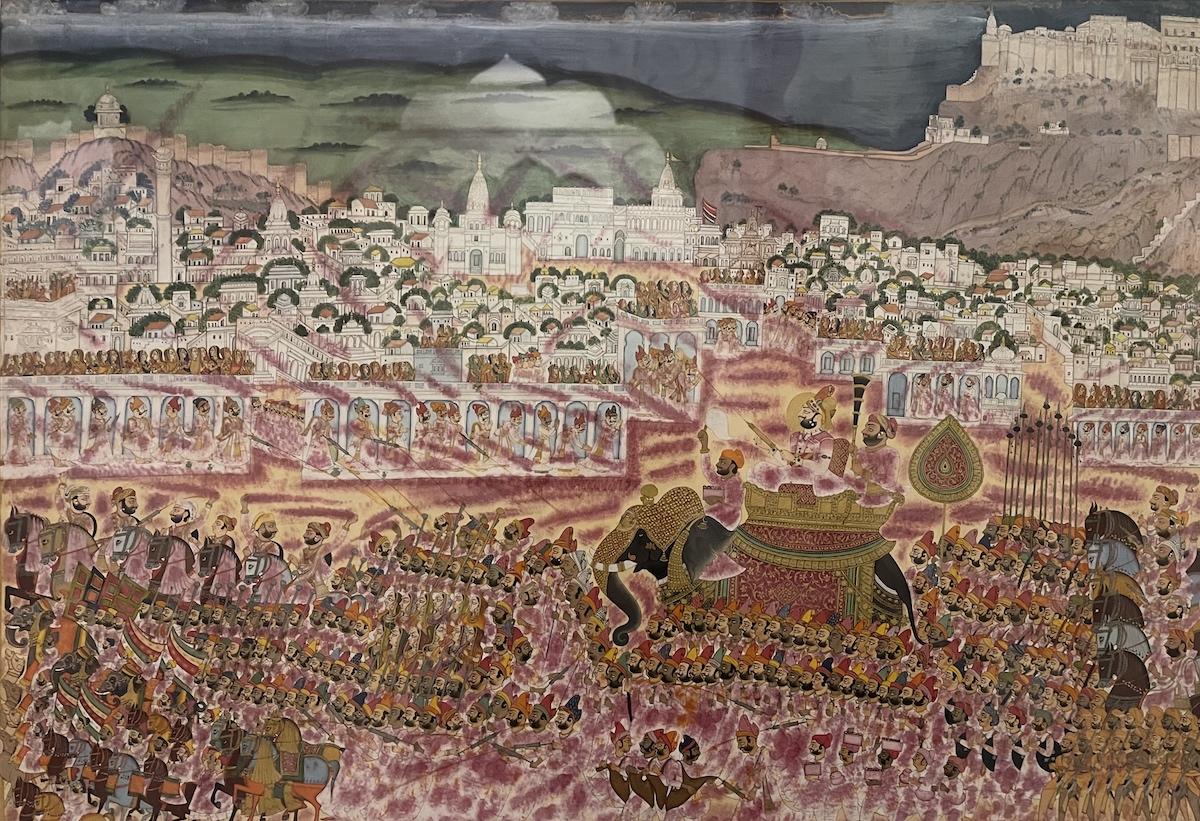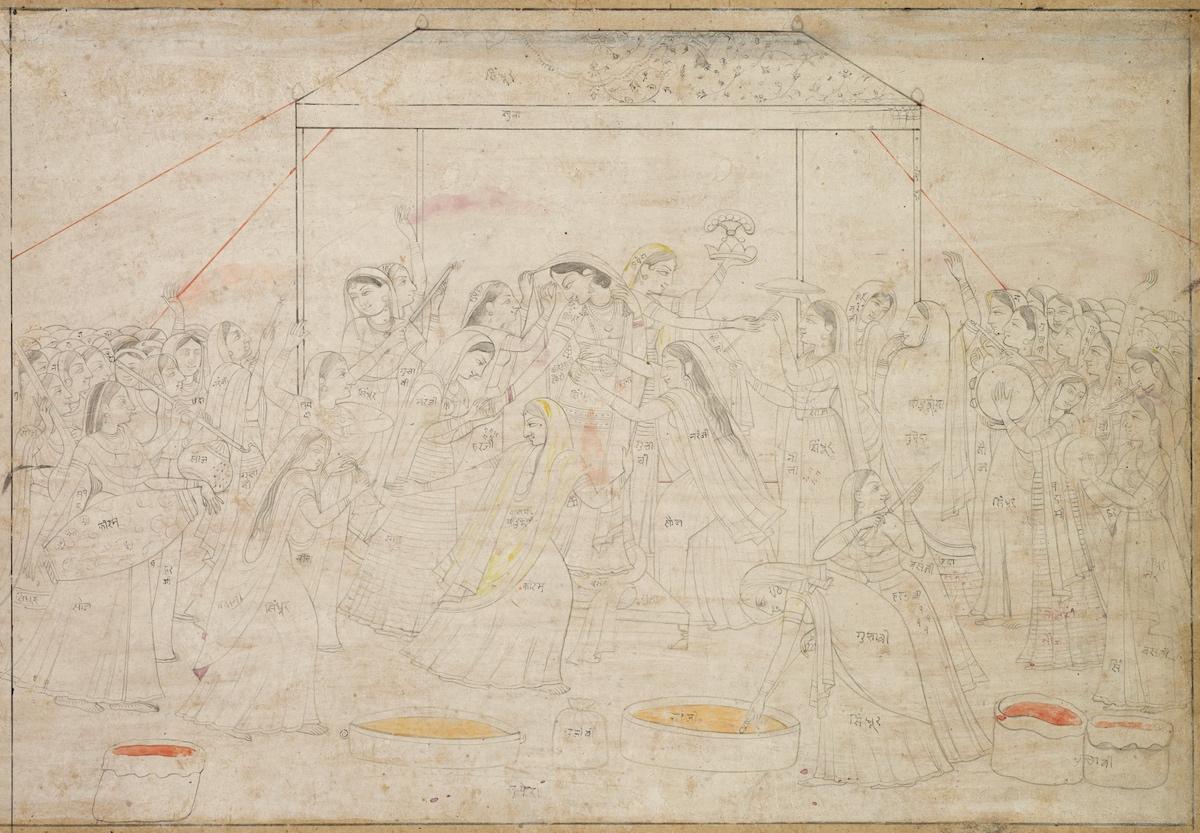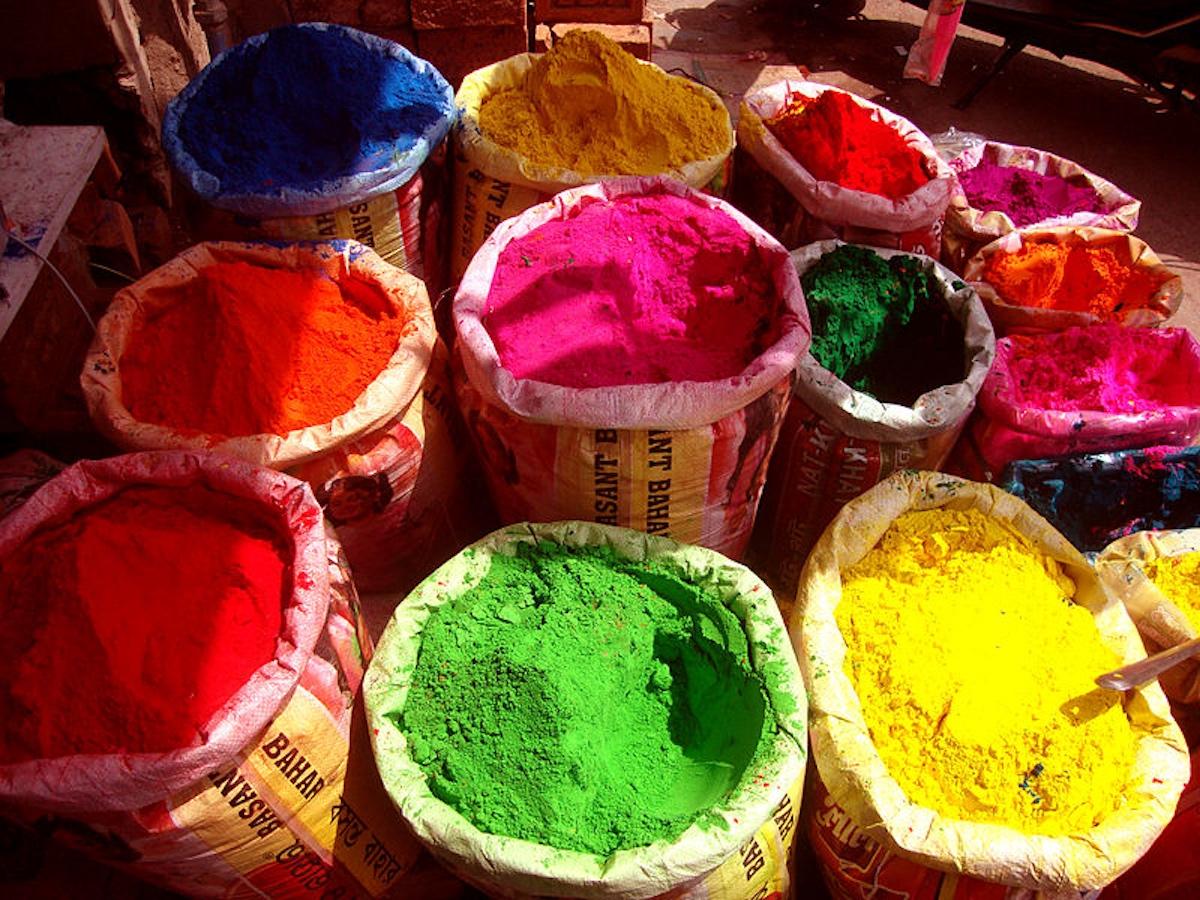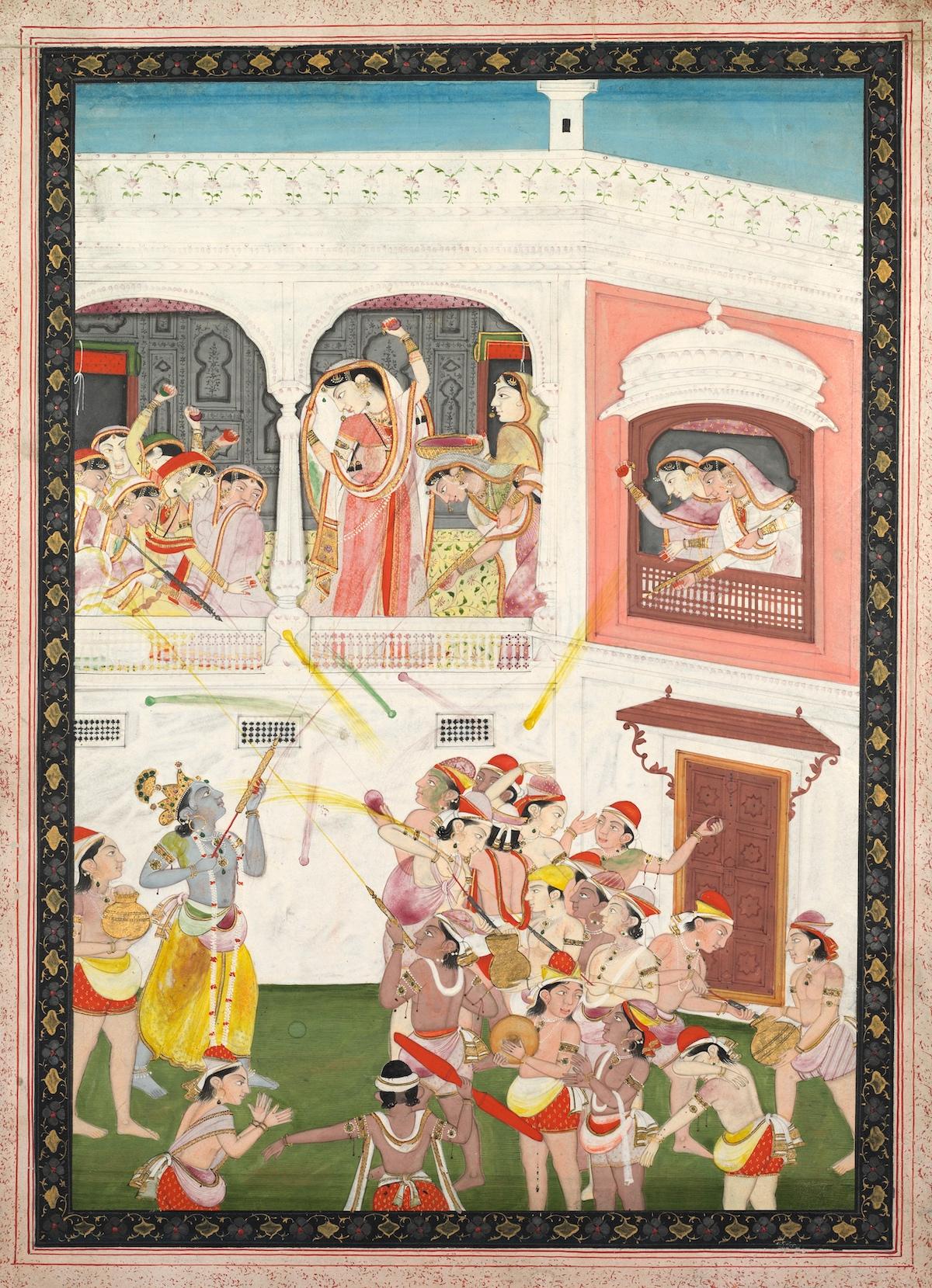It is difficult to say from whence these themes of misbehavior—or indeed, Holi itself—originated. Set on the full moon in the month of Phalguna, Holi marks the arrival of spring, so practices may in part be a reflection of vernal fertility. Yet the Festival of Colors also derives from Hindu mythology; it juggles the threefold purpose of commemorating the love of Radha-Krishna (a hermaphroditic personification of pleasure) and representing the destruction of the impious demoness Holika by Vishnu—one of the three principal deities in Hinduism. Holika’s vibrant death by fire is another partial explanation for colorful contemporary celebrations, and this flamboyance and material interaction with art materials make Holi a favorite motif in Indian visual culture.
Maharaja Man Singh’s Holi Procession (1810)—a typical sample of the Marwar school of art—depicts a nimbused king, riding elephant-back, shooting gulal out onto his kingdom. Against the extant Kunjbihariji temple and Mehrangarh fort, he and his citizens douse the city of Jodhpur in a permeant pink, which blurs in juxtaposition against the figures’ crisp lines. Overcrowded and oversaturated, the painting illustrates the revelry and community that the holiday demands: flushed with magenta powder, Jodhpur blushes with pleasure as genders, classes, and castes blend.
































